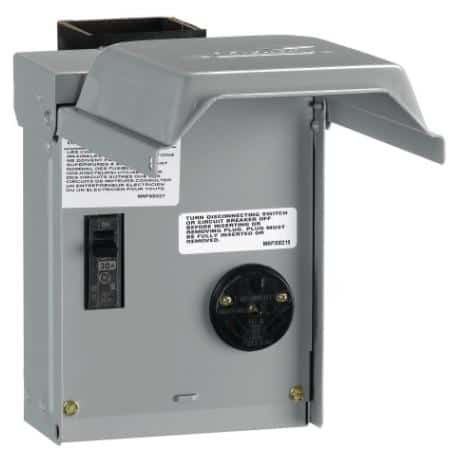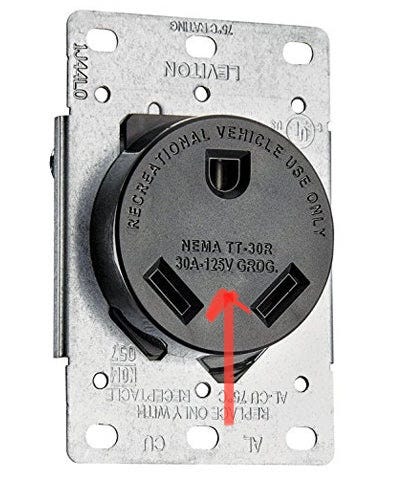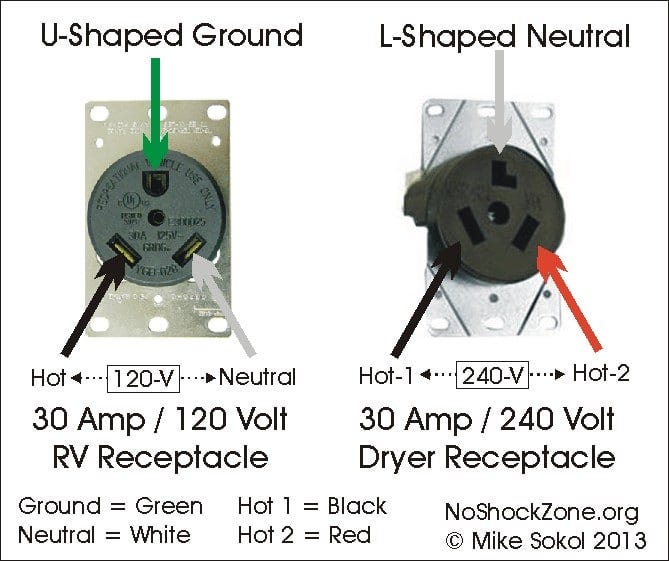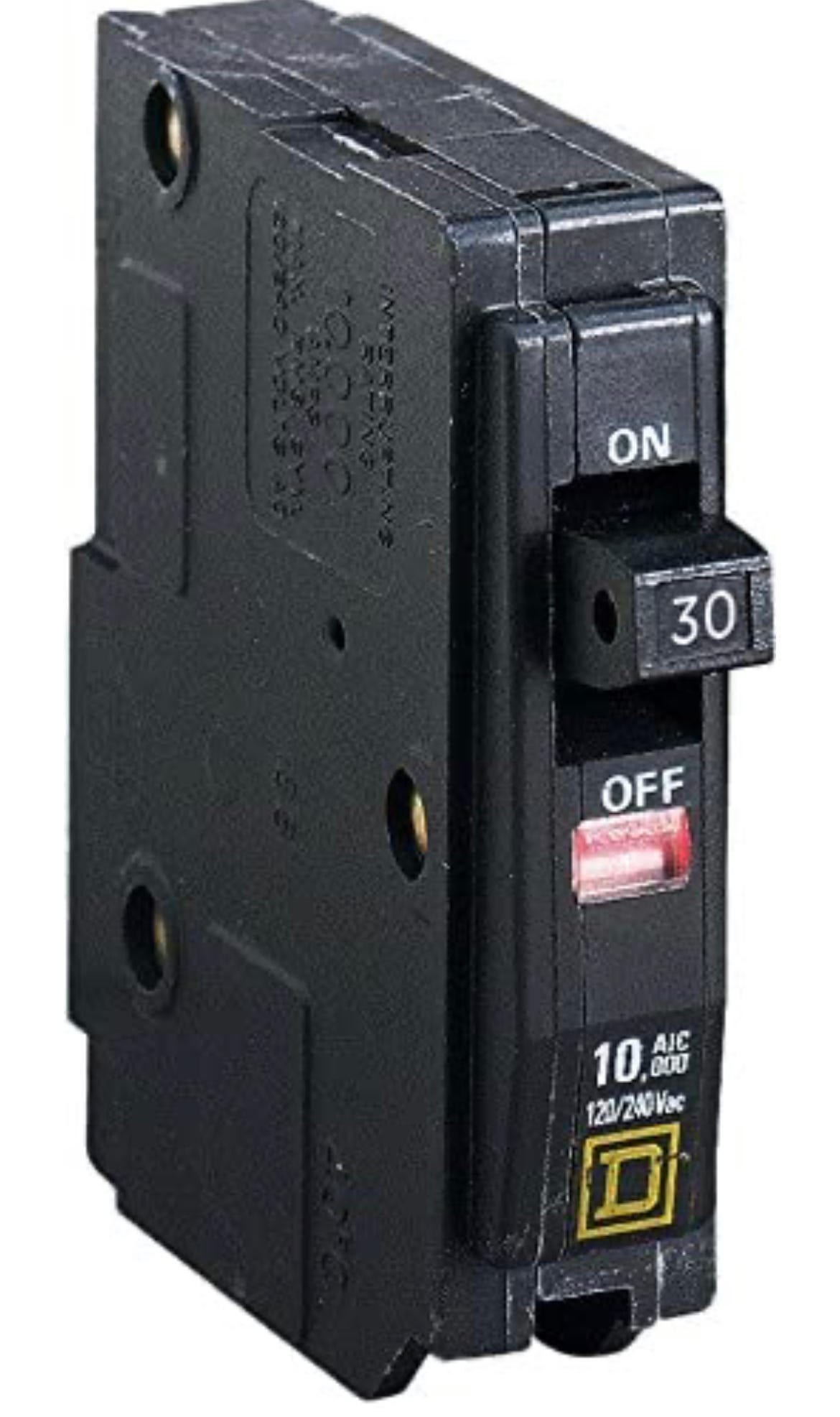Question about installing a 30 amp breaker at my home...
Make sure your electrician knows that a 30-amp RV outlet is wired for 120 Volts!
I am new to RVing and expect my first rig delivered to me in April. I am having an electrician come first of May to install an outlet on my garage breaker box, not separate meter there, so I can hook up my rig - it is a 30 amp plug in for the rig - Rockwood MiniLite 2205 S. The dealer said to be sure the electrician installs a 110 V line ??? Can you explain that? I had the power company come out and they verified it is possible to add this breaker and that my total watts for the house is 270V? This may be a foreign language. I love getting your emails but my knowledge is at the kindergarten level. - Kathy S.
Dear Kathy,
Your 30-amp RV is indeed wired for 120 volts (sometimes called 110 volts). And your house circuit breaker panel panel is wired with something called split-phase, 120/240-volt service. This makes it pretty straightforward for an electrician to add a 30-amp or 50-amp RV outlet at your house. But it’s important that a 50-amp RV outlet is wired with 2-pole, 120/240-volts split-phase, and a 30-amp RV outlet (called a TT-30 for Travel Trailer 30) is wired with single-pole, 120-volts.
Pretty simple, right? However, some residential electricians will assume that TT-30 RV outlet is a dryer outlet and miswire it with 240-volts. That’s an expensive mistake that will destroy your RV electrical system in seconds. Read this….
It seems like the number of emails I get about licensed electricians accidentally wiring 30-amp RV outlets for 2-pole 240 volts instead of 1-pole 120 volts is rapidly accelerating. Some of this is probably due to a huge influx of new RV buyers in the last year. And some is likely because RV owners want to use their RV trailer at home for an “outside” office or visitor’s bedroom.
In any event, installing a dedicated 30- or 50-amp pedestal outlet on your house is a great idea. Just make sure your electrician wires it correctly. Read this email…
Here’s an email from last year…
Hey Mike,
Still no RV inlet installed here, but you’ll be delighted (sarc) to know that I just had a 10-minute debate with another experienced electrician that insisted that my trailer had to be wired for 220 and required a dual pole breaker.
That’s TWO Licensed Electricians – with at least 20 years’ experience each – that both insisted on the same wrong thing. If I didn’t know better, I’d have gone along with it!
When I showed them the 30-amp receptacle and asked them to look very closely at the markings, their eyes nearly popped out of their heads. “It looks like a dryer receptacle, doesn’t it? But it is slightly different! Check out the markings that says it’s rated for a maximum of 125 Volts! Anyway, you saved my butt TWICE. Thank you! —Mark in Massachusetts
Here’s why this happens
This is a common mistake made by residential electricians because the TT-30 RV outlet closely resembles an old-school 230-volt dryer outlet that was common in the 1960s. So, a casual look at the 30-amp RV outlet they’re about to install may make them believe it needs to be wired with 2-pole, 240 volts, when it’s actually wired for single-pole, 120 volts.
If you allow an electrician to wire it to 240 volts and plug your 120-volt RV into it without an EMS Surge Protector to monitor the voltage, it can do thousands of dollars in damage in just a few seconds.
Now Hear This! Your 30-amp RV needs to be wired to a single-pole, 120-volt circuit breaker!
Please make sure your electrician reads this before they begin any 30-amp RV pedestal outlet installation at your house. Getting repair parts for a burned up electrical system in your RV is getting nearly impossible.









Hi Mike: This article made me chuckle as I had a similar experience with a Master Electrician. I occasionally do electrical projects around my house. I will install and wire everything back to the panel. I then have a Master Electrician come inspect my work and terminate the new circuit onto the panel. A couple of years ago, I purchased a 30 Amp RV outlet box with a built-in circuit breaker for my motorhome. I installed it in the garage and wired it back to the panel in the basement. When the electrician showed up, he told me that what I did was all wrong because it was a 240 volt application. I had to gently explain to him that it was 120 volts and actually show him the labelling on the outlet box and the documentation that came with it to convince him. Once the circuit was terminated, I plugged in my Southwire Surge Guard to show him that all was good. He took it as a lesson learned and said that he was glad that I knew what I was doing. Thanks..... Ross